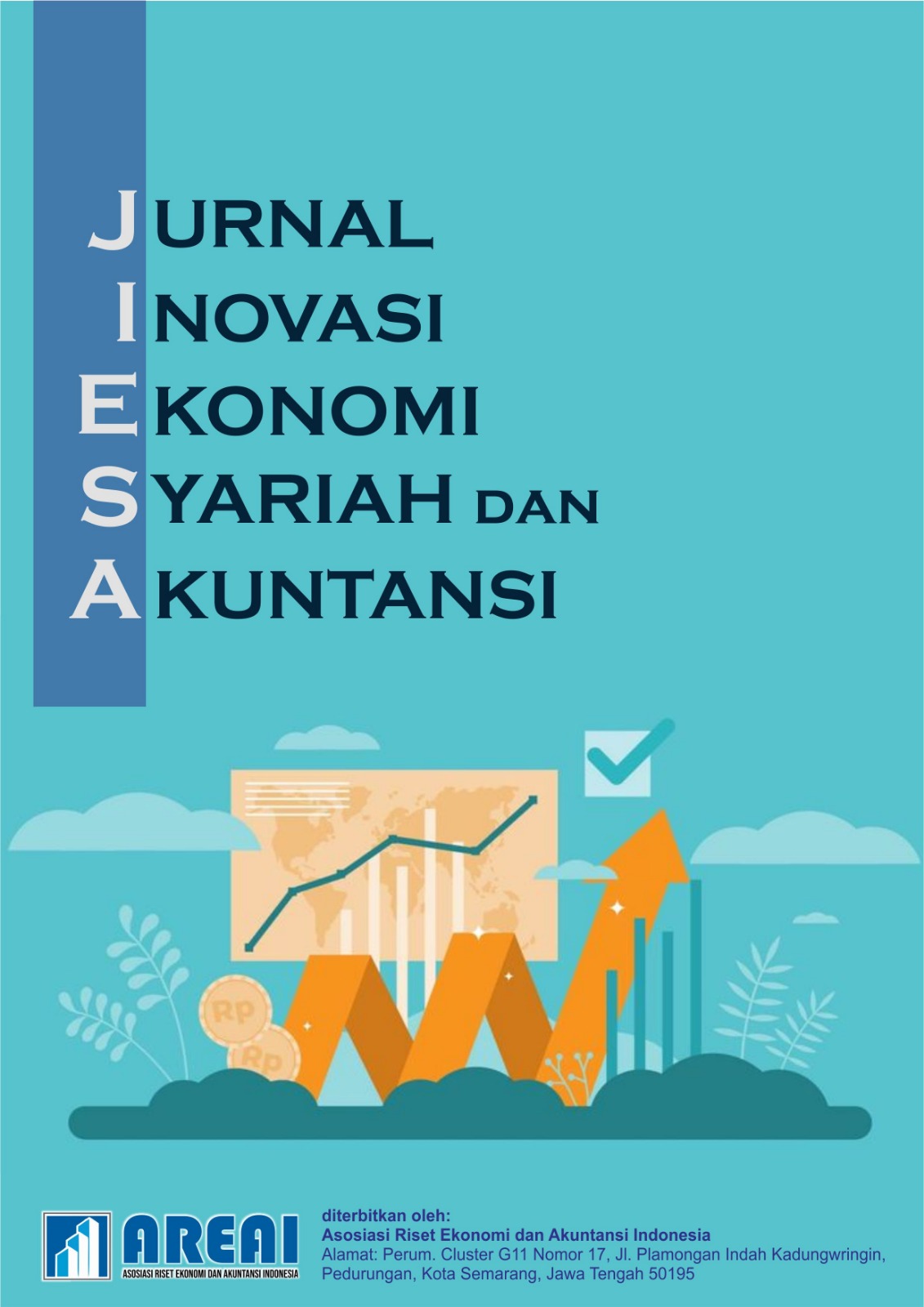Peran Social Capital dan Literasi Digital dalam Meningkatkan Literasi Keuangan Syariah Generasi Z di Era Digital
DOI:
https://doi.org/10.61132/jiesa.v2i3.914Keywords:
Digital Literacy, Generation Z, Social CapitalAbstract
In the digital era, the ability to utilize social networks and digital platforms to gain financial education and make financial decisions in accordance with sharia principles is increasingly essential. This study aims to analyze the influence of social capital and digital literacy on Islamic financial literacy among Generation Z. A quantitative approach was employed, with primary data collected from 209 respondents through purposive sampling, consisting of Generation Z individuals residing in Yogyakarta. Data analysis was conducted using path analysis with the Structural Equation Modeling approach based on Partial Least Squares (SEM-PLS), utilizing the SmartPLS 3.0 software. Construct reliability testing, discriminant validity, and hypothesis testing were carried out to evaluate the relationships between variables. The results indicate that social capital and digital literacy have a positive and significant effect on Islamic financial literacy. Digital literacy enhances individuals’ access to Islamic financial information through digital media, while social capital strengthens knowledge sharing and trust within communities. These findings highlight the importance of leveraging digital technology and reinforcing community-based approaches to improve Islamic financial literacy. This study contributes to the growing body of literature on the interaction between social capital, digital literacy, and Islamic financial literacy in the digital age and offers strategic insights for educational institutions and financial service providers to promote sharia-based financial literacy.
Downloads
References
Choung, H., Kim, H., & Park, Y. (2023). Digital literacy and financial well-being: Evidence from young adults. Journal of Financial Services Marketing, 28(1), 55–66. https://doi.org/10.1057/s41264-023-00156-9
Hair, J. F., Black, W. C., Babin, B. J., & Anderson, R. E. (2021). Multivariate data analysis (8th ed.). Cengage Learning.
Huston, S. J. (2010). Measuring financial literacy. Journal of Consumer Affairs, 44(2), 296–316. https://doi.org/10.1111/j.1745-6606.2010.01170.x
Irwan, & Adam, M. (2020). Validitas dan reliabilitas instrumen penelitian. Jurnal Penelitian dan Evaluasi Pendidikan, 24(2), 112–123.
Jose, A., & Ghosh, M. (2024). Digital financial literacy and consumer decision-making: A mediating model. Journal of Consumer Research, 50(1), 87–101.
Molyneux, P. (2020). Financial education and financial literacy: International perspectives. International Journal of Banking, Accounting and Finance, 11(3), 201–220.
Nurrahman, A., Sukirno, S., Pratiwi, D. S., Iskandar, J., Rahim, A., & Rahmaini, I. S. (2022). Developing student social attitude self-assessment instruments: A study in vocational high school. REID (Research and Evaluation in Education), 8(1), 1–12. https://doi.org/10.21831/reid.v8i1.45100
Otoritas Jasa Keuangan. (2023). Laporan tahunan Otoritas Jasa Keuangan 2023. Otoritas Jasa Keuangan. https://www.ojk.go.id
Otoritas Jasa Keuangan. (2024). Survei Nasional Literasi dan Inklusi Keuangan 2023. Otoritas Jasa Keuangan. https://www.ojk.go.id
Pamungkas, G., Alifa, N. L., Wijaya, W., Layaman, & Aziz, A. (2023). The role of digital literacy and financial literacy on the use of Islamic fintech moderated by religiosity: The impact on personal financial management. International Journal of Sustainable Applied Sciences (IJSAS), 1(6), 759–776. https://doi.org/10.59890/ijsas.v1i6.1019
Purwidianti, W., Sari, M., & Pratiwi, I. (2024). The role of social capital in improving financial behavior and literacy in Islamic communities. Jurnal Ekonomi Syariah, 12(1), 34–45.
Retnawati, H. (2016). Analisis kuantitatif instrumen penelitian (Panduan peneliti, mahasiswa dan psikometri). www.nuhamedika.gu.ma
Setiawan, M. A., Salim, U., & Khusniyah, N. (2021). The mediating role of social capital in the relationship between financial literacy and financial inclusion. Jurnal Aplikasi Manajemen, 19(4), 782–790. https://doi.org/10.21776/ub.jam.2021.019.04.10
Wafa, A., & Gafur, A. (2024). Exploring the effects of financial literacy on millennial investment behavior in Indonesia. Jurnal Ilmu Ekonomi Syariah, 16(1), 77–89.
Willy, M. A., & Hartono, R. (2015). Analisis validitas konstruk menggunakan pendekatan validitas konvergen dan diskriminan. Jurnal Manajemen, 19(2), 122–136.
Zhao, J., & Li, L. (2021). Financial literacy, social capital, and rural entrepreneurship in China. Finance Research Letters, 38, 101469. https://doi.org/10.1016/j.frl.2020.101469
Zulkarnain, M. (2022). Digital financial literacy and its role in financial decision-making in Indonesia. Journal of Islamic Finance, 15(1), 85–99. https://doi.org/10.1007/s12153-022-00319-3
Downloads
Published
How to Cite
Issue
Section
License
Copyright (c) 2025 Jurnal Inovasi Ekonomi Syariah dan Akuntansi

This work is licensed under a Creative Commons Attribution-ShareAlike 4.0 International License.





